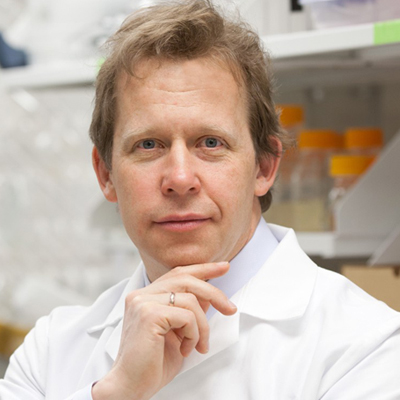Bioinspired materials
Living cells are capable of the most efficient energy utilization. Unlike any manufacturing process known today, cells are nearly 100% efficient because their machinery assembles itself. Dr. Nicholas Kotov, Joseph B. and Florence V. Cejka Professor of Engineering at the University of Michigan, is working on replication of such processes for cornerstone materials of today’s electronics – semiconductors and metals. The knowledge and device prototypes that Dr. Kotov obtains in his studies enable tremendous leaps in technological efficiency.
Dr. Kotov already demonstrated that self-organization leads to biomimetic materials some thought to be impossible to make. Moreover, he also developed and patented technology to make them at scale. Dr. Kotov has pioneered bionic supraparticles that self-assemble from proteins and semiconductor particles. These assemblies seamlessly integrate and enhance the properties of both. One of the milestones for his future work is the implementation of nanoparticle self-assembly for battery components. Inexpensive biosensors to test water contamination and food quality are among his immediate technological targets as well. Dr. Kotov and his team collaborate with colleagues around the world to make practical realization of his discoveries.
Current research includes:
-
Engineering of Force-Fields: Self-assembly processes at nanoscale require knowledge of forces acting at the nanoscale. They are multiple and each of them is complex. Methods for their quantitative control are still mysterious and represent the next frontier in nanoscience. Knowledge of the nanoscale forces is required for the design of complex self-assembled structures that Dr. Kotov performs using carry out using special computer programs.
-
From Nanoparticle to Devices: Applying concepts known from biology to nanoparticles, Dr. Kotov is able assemble multi-particle superstructures with sophisticated geometries. For instance, he showed that semiconductor and meal nanoparticles can self-assemble into twisted ribbons resembling DNA helixes. The simpler versions of these assemblies, such as nanowires and conductive sheets, made by green water-based technologies, are now ready for integration into electronic devices.
-
Chiral Nanoparticles and their Assemblies: Dr. Kotov and his team are studying chiral nanoparticles, an emerging broad class of nanomaterials. Their unusually strong ability to rotate polarization of light attracts scientists, engineers, and doctors. Chirality of nanoparticles makes possible intricate configurations of assembled superstructures and functions. Latest experiments show that the chiral nanostructures enable personalized cancer diagnostics and energy efficient production of potent drugs.
Bio
Since he was five years old, Dr. Nicholas Kotov conducted chemistry experiments. While at first it was little rockets and fireworks made from cut-out heads of matches. Then, it was the first shoestring chemistry kit that was assembled from chemicals with his mother’s help who is an organic chemist. He remembers fondly making small experiments with dry ice alongside her. His father was an academic, too, a physicist, but he was far away at that time. When Kotov began to question what he wanted to do in life professionally, chemistry seemed to give him the widest open field of interests.
As he anxiously prepared for his A-level exams, with the hope of entering university, he chuckles with humbleness as he recalls that he “got lazy and forgot to look at all the questions.” Luckily, he passed the exam remembering an article about chiral syndiotactic polymers he read serendipitously a few months before.
Dr. Kotov continues to do this research because there are untapped possibilities to understand nanoscale components of nature. Motivated by the hope of making an impact on people’s lives, he and his team are solving ecological and technological problems.
In his free time, aside from research, Dr. Kotov spends much of his time staying active. As a black belt in taekwondo and an avid hiker, he and his wife are often in the outdoors.
Website: www.umkotov.com


